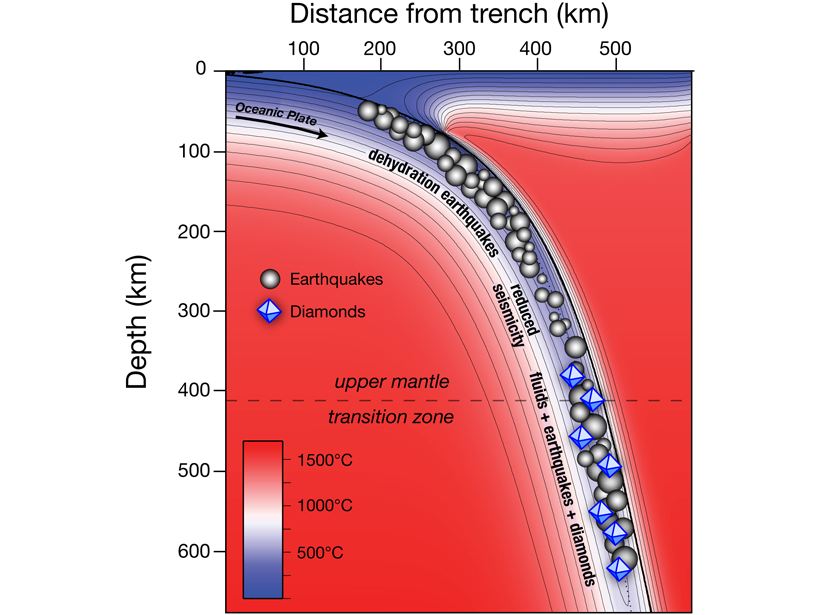Source: AGU Advances
Deep earthquakes represent brittle failure in a generally ductile regime and the mechanism that causes these earthquakes below 300 kilometers is debated. Proposed mechanisms for deep earthquakes include a delayed phase transition of olivine at depth, development of weakness zones associated with spinel transitions or a potential role for fluids. Hydrous minerals and carbonates can be carried down by the subducted slab to depths below 300 kilometers.
Shirey et al. [2021] provide the first convincing arguments that reactions that liberate fluid or melt occur at the focus of deep earthquakes. The evidence is found in diamonds, which are the deepest samples for the Earth’s mantle. Their arguments are based on the mineral assemblage of inclusions in “deep”, sublithospheric diamonds and phase equilibria modeling. Thermodynamic models combined with thermal models of downgoing slab show that these carbon or hydrogen containing mineral phases will release their volatiles at depth and can form some of the largest diamonds found. The inclusions in diamonds record their depth of formation which coincides with the depth where the deep earthquakes occur. It is proposed that the release of these fluids trigger the deep seismicity.
Citation: Shirey, S., Wagner, L., Walter, M., Pearson, G. & van Keken, P. [2021]. Slab Transport of Fluids to Deep Focus Earthquake Depths – Thermal Modeling Constraints and Evidence from Diamonds. AGU Advances, 2, e2020AV000304. https://doi.org/10.1029/2020AV000304
—Vincent Salters, Editor, AGU Advances
Text © 2021. The authors. CC BY-NC-ND 3.0
Except where otherwise noted, images are subject to copyright. Any reuse without express permission from the copyright owner is prohibited.

